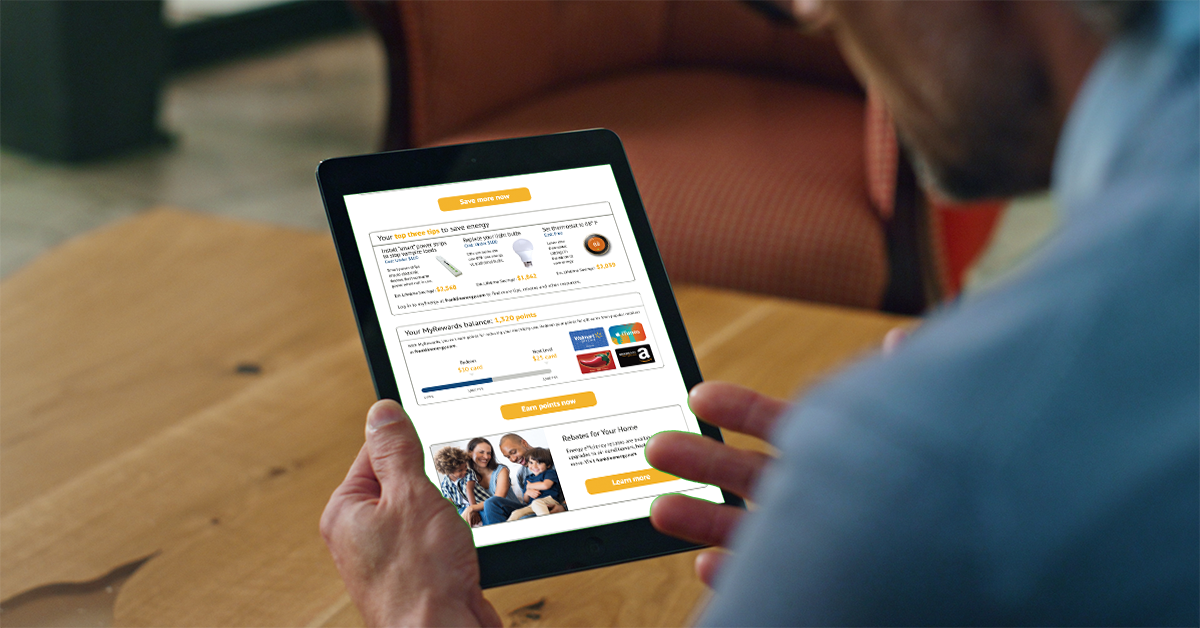Beyond Savings: How Behavioral Energy Programs Are Powering Peak Demand Flexibility
October 13, 2025 •Greg Caggiano

For more than a decade, behavioral energy efficiency programs—like Home Energy Reports (HERs)—have helped millions of households use energy more wisely. These simple, data-driven communications offer personalized insights, neighbor comparisons, and practical tips that nudge everyday behavior in a more efficient direction. But as the energy grid faces new pressures, these programs are evolving—and their impact is growing.
At Franklin Energy, we’re leaning into that evolution. Because in today’s energy landscape, it’s not just about how much energy we use. It’s about when.
Meeting the Moment: Behavioral Flexibility in Action
Grid operators and utilities are under increasing strain as demand spikes during key hours—especially on hot summer afternoons or cold winter evenings. At the same time, more renewables are coming online, adding variability to the system. Behavioral programs can help bridge this gap, not just by reducing consumption, but by shifting it.
We’re now using NGAGE Discover, our advanced analytics platform, to assess how HERs and similar tools influence when people use electricity, not just how much. Through rigorous modeling, we’ve uncovered real, measurable changes in peak demand, especially when reports are designed with timing in mind.
What the Data Shows
In regions across the country, we analyzed high-frequency interval data from residential behavioral programs. Our analysis combined econometrics with machine learning to capture subtle shifts in usage patterns. The takeaway? Customers respond. In many cases, they’re using less energy during high-stress hours—without any hardware or incentives. Just better information, delivered at the right time.
Although this is helpful information, it’s important to note that behavior is not uniform. Results vary by region, household makeup, and even messaging style. But with the right design, behavioral programs offer a cost-effective path to demand flexibility. And they’re ready to scale.
Centering Equity from the Start
To fully unlock this potential, we must design with inclusion in mind. Too often, behavioral programs have missed the mark in reaching historically underserved communities. That’s changing. Today, we work with local partners to co-create messaging, offer reports in multiple languages, and recognize the real-life constraints that shape energy use—like shift work or caregiving responsibilities.
This inclusive design isn’t just a nice-to-have. It’s essential. Behavioral programs must be flexible, culturally relevant, and accessible to deliver results for everyone—and to ensure that the benefits of grid modernization are shared equitably.
Rethinking What We Measure
Traditionally, behavioral programs have been evaluated on total kilowatt-hour savings. That metric still matters—but it’s no longer enough. As demand flexibility becomes a critical grid need, we’re building new metrics that look at timing, responsiveness, and participation in demand response events.
Put simply: We’re shifting from “Did customers use less?” to “Did they use energy differently—and did that make a difference?”
More Than Nudges: A New Role for Behavioral Science
Behavioral tools like Nexus—our proprietary engagement engine—are already delivering personalized insights to over 1.3 million customers. When layered with technologies like smart thermostats and demand response platforms, these tools become even more powerful.
But the real promise lies in intentional design. When programs are built to support flexibility from the outset—and backed by real data, community insight, and inclusive design—they can drive meaningful change.
Behavioral programs are no longer just a conservation strategy. They’re a frontline solution for grid resilience, equity, and a smarter energy future.
Ready to see how our behavioral programs can make a difference for your utility?


